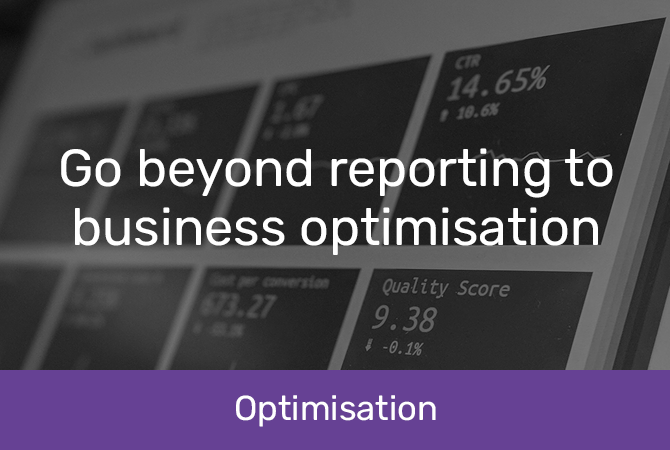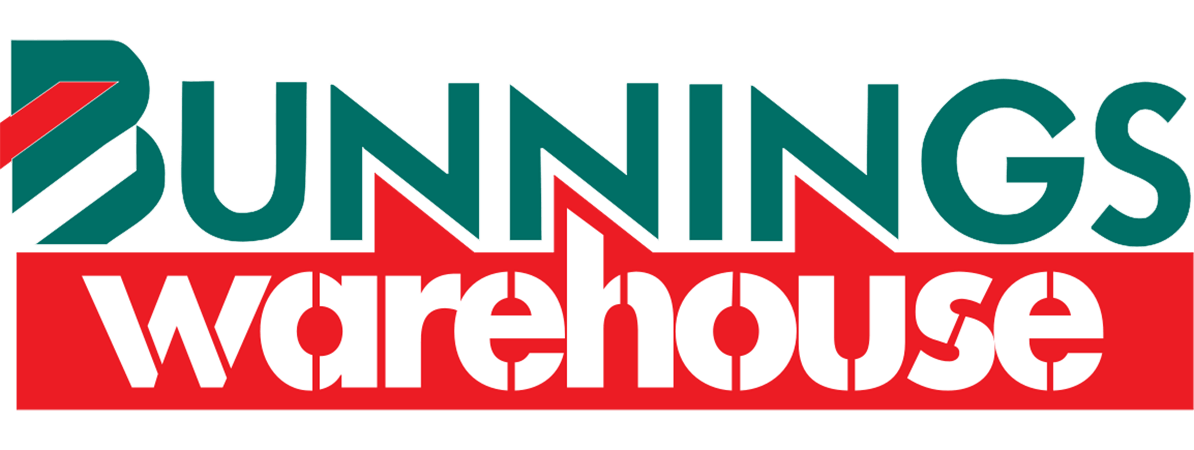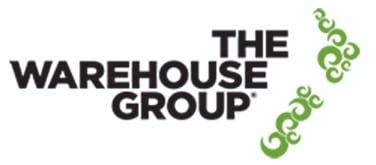
Go beyond reporting to business optimisation
Reporting is a useful way to gather information about a business, but it can’t deliver the timely, accurate insights modern businesses need. Analytics goes deeper, making connections, surfacing trends, and ensuring that every decision you make is driven by data.
At Datamine, we go one step further, using analytics as a driver for continual optimisation. It’s an approach that helps our clients improve in the long term – whether that’s reducing costs, boosting efficiency, or delivering better customer service. We turn your business data into an optimisation strategy, so you don’t have to rely on guesswork to make decisions.
What is business reporting?
Reporting is the process of gathering and presenting data about an organisation’s financial situation, sales, marketing work or operations. Reporting uses your business data to track key metrics and present them in a digestible, usable way. This can be graphs or graphics, KPIs, sales figures across different locations and product lines, or snippets of customer feedback.
Reporting is used to measure past performance and make decisions about the future. For example, sales reports can feed into staffing, inventory and location decisions.
Why are your reporting efforts not providing value?
If reporting isn’t providing the value you expect, it could be a result of poor-quality data, disconnected software systems, lack of actionable insights or a missing link between the report and the decision. If there’s no process in place to turn reporting insights into action, you’re not likely to see significant organisational change.
Reporting without a deeper focus on analytics or optimisation may also underdeliver because it’s not the right choice for your organisation. If your teams need future projections and actionable insights, basic reporting isn’t going to cut it.
Limitations of reporting
The limitations of reporting include a lack of actionable insights, a focus on financial elements above others, and the time-bound nature of many reporting processes. Reporting outcomes may also be limited thanks to the quality, accessibility or integration of your data.
Lack of usable insights
Reporting just tells you what has happened – it doesn’t tell you what to do next. For example, a report could show sales figures for the month across store locations, but if it doesn’t have any deeper analysis of sales patterns, customer numbers or other sales drivers, it may not be very useful. This can mean that reports, even if they’re based on quality data, end up languishing in a drawer instead of triggering change.
Time-specific insights
Most reporting gleans insights from historical data. While ‘looking back’ is a useful way to measure performance, it can be limited when it comes to future decision-making or keeping up with quick shifts in your market. This is particularly true if you only run reports every few months – insights from September may no longer be relevant or useful when you’re making decisions about the Christmas period.
Financial focus
Traditionally, business reporting focuses on financial metrics like sales numbers, profitability, turnover and customer acquisition. While these numbers are important, this means missing intangible measures like customer and employee satisfaction, reputation in the market and customer loyalty.
What is the difference between reporting and analytics?
The key difference between reporting and analytics is in the questions they answer. Reporting is about examining what has happened in your business; analytics is about understanding the why behind your performance.
Think of reporting as the top layer of business information. It gathers surface-level information – from sales volumes and average sale price to customer numbers, product turnover and more. Analytics uses the same data to uncover patterns and trends, make connections between data points, and predict future outcomes.
How does analytics drive business optimisation?
Analytics is one of the key building blocks of business optimisation – after all, you can’t improve if you don’t see gaps, inefficiencies and opportunities across your organisation. Even if your overall performance is solid, analytics can help you build on that success and grow your business even further. Analytics helps you identify these areas for improvement so you can make changes that have a real impact and keep making them. There’s no set end point for optimisation – instead, it’s an ongoing cycle of analysis, improvement, testing and analysis.
 Stages of business optimisation
Stages of business optimisation
Business optimisation is an ongoing process, not a one-off project. Partnering with data experts like the team at Datamine can help you navigate the complex elements – from data cleaning and analytics to establishing a wider data strategy.
See your business as a whole
Optimisation needs to start with a clear-eyed view of your business as it stands. This means defining key issues and limitations, looking at data sources and systems, and setting initial goals around optimisation.
Analyse your data
Data analysis is the next step. This involves combining data from all your departments and business systems and pulling in third-party data if it will add value or help you gain deeper insight. The final analytics method and visualisation approach depends on your optimisation goals – you may want to examine sales numbers across locations, profile or segment your customer base, or view market penetration and customer acquisition.
Of course, if your organisational data is scattered, incomplete or outdated, the analytics process may need to start with Data Cleaning.
Create a plan
Next, create a plan or strategy for optimisation. This involves developing a clear process for data collection, storage, analysis, implementation and testing.
A defined Data Strategy helps you identify opportunities for change and maximise the value of your data analytics investment.
Prioritise initiatives that deliver value
An effective analytics process can uncover multiple avenues for change – but it’s not always possible to implement every potential initiative. The key is prioritising the initiatives that will deliver the most value, whether that’s increasing profits, reducing manual work, or improving your service delivery.
Turn insight into action
The most important step? Putting your chosen initiatives into action. This may mean changing the way you market or price your product, implementing a new software system or app, or targeting customers in a new way. Of course, sometimes the best option is to stay the course and do nothing – the point is, robust analytics lets you know that you’re on the right track.
Regularly review progress and impact
As with any continual improvement process, it’s also vital to have a process for reviewing outcomes. This means regularly examining the impact of a new process, strategy or solution and refining your approach if it’s not delivering the expected results.
Benefits of business optimisation
The benefits of business optimisation include greater visibility and understanding of your performance, data-driven decisions and a business culture focused on continual improvement.
Improved visibility
Analytics can help you improve the visibility of every part of your organisation. Customer groups, operations, sales numbers, staff performance – the more leadership teams know about the inner workings of different business areas, the easier it is to identify weaknesses and find opportunities for improvement.
Data-powered decisions
In fast-moving markets, making the right business decisions can be difficult. With AI-powered analytics and a strategy for continual improvement, team and organisational leaders can make decisions based on reality, not guesswork. For example, analysing store locations might show that several premises are underperforming and alternative locations would be more successful. As a result, the organisation could choose to close some stores and open in other areas.
Continual improvement
Business optimisation is about continual analysis, implementation, testing and refining. It’s essentially a pathway to incremental improvement over time, with many small changes adding up to a more efficient, more profitable organisation.
Ready to start your optimisation journey? Talk to the team at Datamine now.
Business optimisation: Case study
Westpac is one of the best-known banks in New Zealand and Australia, serving millions of customers. When the banking giant wanted to optimise its credit card services, it turned to Datamine for help.
The challenge
As part of a wider analytics and optimisation project, Westpac wanted to get to know its credit card customers to reduce customer churn and boost profits. It needed quick, accurate insights that could be actioned in real-time.
The solution
The Datamine team developed a customer ‘love score’ that would help Westpac measure customers’ passion and commitment to the brand. The model used Westpac’s existing Net Promoter Scores (NPS) and correlated this to customers’ behavioural data, demographic information and loyalty point redemption rates. The outcome was a clear ‘Love’ score for each Westpac credit card customer.
The outcome
The ‘Love’ score became a simple way for Westpac to segment and target its credit card customers. By identifying the customers most and least loyal to Westpac, the score helped the marketing team send relevant, resonant marketing messages to the right groups of people. The new metric didn’t replace the older profitability modelling but added another layer of understanding to enhance the segmentation strategy.
How Datamine uses data analytics and AI to power business optimisation
At Datamine, we believe in the power of data, so we’re always focused on analytics-driven optimisation over basic reporting. With a team of experienced data experts and a comprehensive toolkit of solutions and analytics methods, we can help any organisation work towards optimisation. Our approach is collaborative to the core – we work closely with your team from planning and goals to analysis, implementation and review. Throughout, we’re laser-focused on real change and tangible outcomes.
Want to know more about analytics, optimisation and working with Datamine?
Fill in our contact form, and one of our team members will be in touch.














































![20221205 Market Share - the Kingpin of Marketing Analytics [LinkedIn]](https://www.datamine.com/hs-fs/hubfs/Images/Datafix%20Blog%20Feature%20images/2022/20221205%20Market%20Share%20-%20the%20Kingpin%20of%20Marketing%20Analytics%20%5BLinkedIn%5D.png?width=1200&height=627&name=20221205%20Market%20Share%20-%20the%20Kingpin%20of%20Marketing%20Analytics%20%5BLinkedIn%5D.png)




